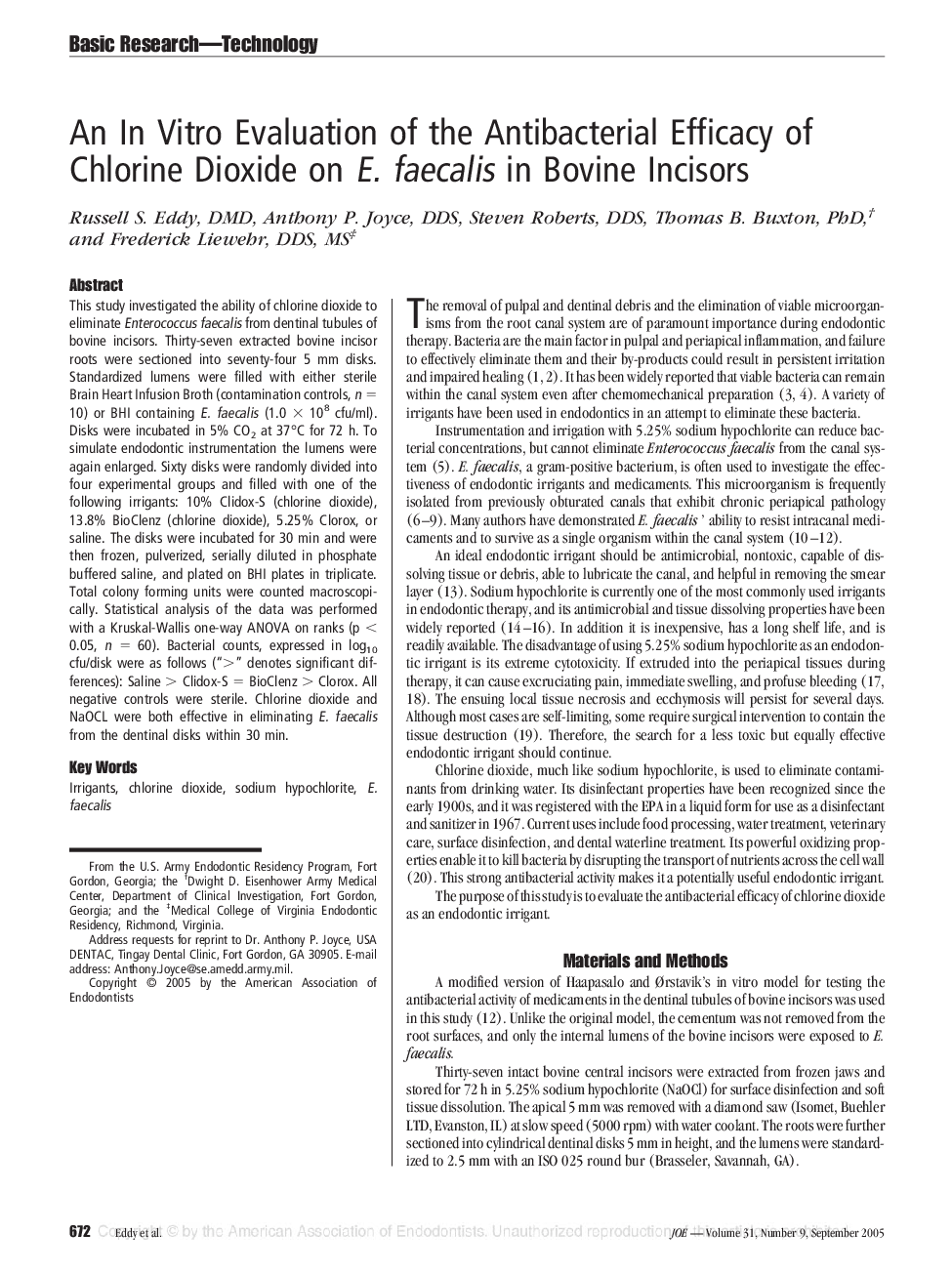| Article ID | Journal | Published Year | Pages | File Type |
|---|---|---|---|---|
| 9211657 | Journal of Endodontics | 2005 | 4 Pages |
Abstract
This study investigated the ability of chlorine dioxide to eliminate Enterococcus faecalis from dentinal tubules of bovine incisors. Thirty-seven extracted bovine incisor roots were sectioned into seventy-four 5 mm disks. Standardized lumens were filled with either sterile Brain Heart Infusion Broth (contamination controls, n = 10) or BHI containing E. faecalis (1.0 à 108 cfu/ml). Disks were incubated in 5% CO2 at 37°C for 72 h. To simulate endodontic instrumentation the lumens were again enlarged. Sixty disks were randomly divided into four experimental groups and filled with one of the following irrigants: 10% Clidox-S (chlorine dioxide), 13.8% BioClenz (chlorine dioxide), 5.25% Clorox, or saline. The disks were incubated for 30 min and were then frozen, pulverized, serially diluted in phosphate buffered saline, and plated on BHI plates in triplicate. Total colony forming units were counted macroscopically. Statistical analysis of the data was performed with a Kruskal-Wallis one-way ANOVA on ranks (p < 0.05, n = 60). Bacterial counts, expressed in log10 cfu/disk were as follows (“>” denotes significant differences): Saline > Clidox-S = BioClenz > Clorox. All negative controls were sterile. Chlorine dioxide and NaOCL were both effective in eliminating E. faecalis from the dentinal disks within 30 min.
Related Topics
Health Sciences
Medicine and Dentistry
Dentistry, Oral Surgery and Medicine
Authors
Russell S. DMD, Anthony P. DDS, Steven DDS, Thomas B. PhD, Frederick DDS, MS,
